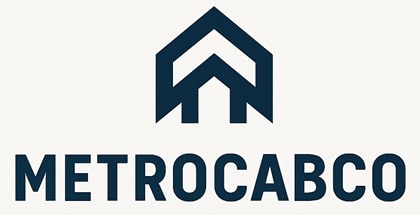A missing brand identity often leads businesses to mistakenly believe their website is flawed. Inconsistent messaging and unclear target audiences create confusion. This disconnect can result in decreased engagement and trust among potential customers. Moreover, a lack of cohesion in visual elements may contribute to brand dilution and reduced recognition. Understanding these aspects is essential for revitalizing the brand. By exploring the nuances of brand identity, businesses can uncover solutions to enhance their overall effectiveness.
Key Takeaways
- A lack of consistent brand messaging creates confusion, making your website seem broken rather than reflecting a strong identity.
- Unclear target audience and mixed signals dilute your brand, hindering effective communication and creating distrust.
- Cohesive visual elements, like logos and color palettes, are essential for a unified brand presence across your website.
- Regular updates to brand elements ensure relevance, enhancing emotional connections and user engagement with your site.
- Measuring brand strength through recognition and loyalty metrics can highlight areas needing improvement rather than indicating website issues.
Understanding the Importance of Brand Identity
How does a brand truly resonate with its audience? Understanding the importance of brand identity is key to achieving this connection.
A strong brand identity encapsulates the values, mission, and vision that a company embodies. It creates a unique persona that differentiates the brand from competitors, fostering emotional connections with consumers.
Also Read
A powerful brand identity reflects a company’s core values, creating a distinct persona that fosters emotional connections with its audience.
Effective brand identity communicates consistency across all platforms, reinforcing recognition and trust. Elements such as logos, color schemes, and messaging contribute to this identity, shaping perceptions and influencing purchasing decisions.
When a brand’s identity aligns with its audience’s values and aspirations, it cultivates loyalty and advocacy.
Ultimately, a well-defined brand identity serves as the foundation for building lasting relationships, driving engagement, and enhancing overall brand perception in a crowded marketplace.
Signs Your Brand Is Missing
A brand may be considered missing when it exhibits a lack of consistent messaging across various platforms, leading to confusion among potential customers.
Additionally, an unclear target audience can hinder a brand’s ability to connect with its intended market, resulting in missed opportunities.
Recognizing these signs is essential for brands aiming to reestablish their identity and presence.
Lack of Consistent Messaging
What happens when a brand fails to maintain consistent messaging? The consequences can be detrimental, leading to confusion among consumers and a weakened brand identity.
Inconsistent messaging can manifest in various ways, such as:
- Mixed Signals: Customers receive conflicting information about products or services.
- Brand Dilution: The unique value proposition becomes unclear, diminishing brand recognition.
- Customer Distrust: Inconsistency can lead to skepticism, causing potential customers to question the brand’s reliability.
- Reduced Engagement: Audiences may disengage when they cannot relate to a brand’s messaging.
Ultimately, a lack of consistent messaging undermines a brand’s credibility and hinders its ability to connect with its target audience effectively.
Addressing this issue is vital for brand success.
Unclear Target Audience
Inconsistent messaging often stems from a fundamental issue: an unclear target audience. When brands fail to define who they are speaking to, their communications become muddled, leading to confusion among potential customers.
This lack of clarity can manifest in various ways, such as mixed marketing strategies, conflicting brand voices, or products that don’t resonate with the intended demographic. As a result, the brand may struggle to establish a loyal customer base, as consumers find it difficult to connect with a message that feels generic or misaligned with their needs.
Identifying and understanding the target audience is essential for creating focused, effective messaging that drives engagement and fosters brand loyalty. Without this clarity, a brand’s identity can become lost in the noise of the marketplace.
Analyzing Your Current Brand Messaging
How effectively does a brand communicate its core values and mission? Analyzing current brand messaging is essential for understanding its impact.
Evaluating a brand’s messaging is crucial for grasping how well it conveys its core values and mission.
Brands must guarantee that their messaging resonates with their audience and reflects their identity. Key aspects to evaluate include:
- Clarity: Is the messaging straightforward and easily understood?
- Consistency: Do all communication channels share a unified voice and tone?
- Relevance: Does the messaging align with the values and needs of the target audience?
- Authenticity: Is the brand true to its values and mission, fostering trust among consumers?
Identifying Your Target Audience
Identifying a target audience begins with defining ideal personas, which helps brands understand the specific characteristics and needs of their potential customers.
Additionally, analyzing market trends provides insight into consumer behaviors and preferences, allowing brands to tailor their messaging effectively.
This strategic approach guarantees that marketing efforts resonate with the right demographic, enhancing brand visibility and engagement.
Defining Ideal Personas
Defining ideal personas is essential for any brand seeking to connect meaningfully with its audience. This process involves creating detailed profiles that encapsulate the characteristics of target customers.
By understanding these personas, brands can tailor their messaging and strategies effectively.
Key components to evaluate when defining ideal personas include:
- Demographics: Age, gender, income level, and education.
- Psychographics: Interests, values, and lifestyle choices.
- Pain Points: Challenges and needs that the brand can address.
- Buying Behavior: Preferences and behaviors related to purchasing decisions.
Analyzing Market Trends
Market trends serve as a crucial compass for brands aiming to identify their target audience effectively. By analyzing emerging patterns in consumer behavior, preferences, and technological advancements, brands can gain valuable insights into who their customers are and what they desire.
This process involves examining industry reports, social media conversations, and competitor strategies to pinpoint shifting demographics and market demands. Understanding these trends allows brands to tailor their messaging and offerings, ensuring relevance and engagement.
Additionally, employing tools such as surveys and focus groups can further refine audience understanding. Ultimately, a proactive approach to analyzing market trends equips brands with the knowledge necessary to connect authentically with their target audience, fostering loyalty and driving growth.
Defining Your Unique Value Proposition
What sets a brand apart in a crowded marketplace? A well-defined unique value proposition (UVP) is essential. It encapsulates what makes a brand distinct and compelling to its target audience. A strong UVP should articulate the brand’s strengths in a straightforward manner.
Here are key elements to reflect upon when defining a UVP:
- Target Audience: Identify who the brand serves and understand their needs.
- Problem Solving: Clearly state the specific problems the brand addresses.
- Differentiation: Highlight what makes the brand different from competitors.
- Benefits: Focus on the tangible benefits customers will receive.
Crafting a compelling UVP not only clarifies brand messaging but also enhances customer connection, ensuring that the brand stands out effectively.
Creating a Consistent Brand Voice
A well-articulated unique value proposition lays the groundwork for effective brand communication, but maintaining a consistent brand voice is equally important for resonance with the audience.
A brand voice reflects the personality and values of a company, shaping how messages are perceived. It encompasses tone, language, and style, ensuring that all content—be it social media posts, website copy, or customer interactions—aligns with the brand’s identity.
Consistency fosters familiarity and trust, allowing consumers to connect emotionally with the brand. Organizations should establish clear guidelines to define their voice, enabling employees and stakeholders to communicate cohesively.
Designing Visual Elements That Reflect Your Brand
While building a brand’s identity, the design of visual elements plays an essential role in conveying its essence. Effective visual design not only captures attention but also communicates the brand’s values and personality.
To create cohesive visual elements, brands should consider the following:
- Color Palette: Choose colors that evoke the desired emotions and align with the brand message.
- Typography: Select fonts that reflect the brand’s character, whether modern, traditional, or playful.
- Logo Design: Develop a distinctive logo that encapsulates the brand’s identity and is memorable.
- Imagery Style: Utilize images that resonate with the target audience and complement the overall brand narrative.
Incorporating these elements thoughtfully can considerably enhance brand recognition and loyalty.
Integrating Brand Elements Across Your Website
Effective integration of brand elements across a website is essential for creating a seamless user experience and reinforcing brand identity. This process involves guaranteeing consistent use of logos, color schemes, typography, and imagery throughout the site.
By aligning these elements, a website can convey a cohesive message that resonates with users, fostering familiarity and trust. Additionally, integrating brand elements into navigational components and calls-to-action enhances visibility and encourages interaction.
It’s important to take into account how these elements work together to create an emotional connection with visitors, ultimately supporting brand recognition. Regularly reviewing and updating brand elements can also guarantee that the website remains current and reflective of the brand’s evolving identity, further solidifying its presence in the digital landscape.
Measuring the Impact of a Strong Brand on Engagement
Brand strength plays a pivotal role in driving user engagement across digital platforms. A strong brand fosters trust and loyalty, which can greatly enhance user interactions.
Brand strength is essential for boosting user engagement, as it builds trust and loyalty that enriches interactions.
Measuring the impact of brand strength on engagement can be broken down into four key metrics:
- Brand Recognition: Higher brand visibility leads to increased site visits and user retention.
- User Trust: A strong brand cultivates trust, resulting in longer session durations and repeat visits.
- Content Sharing: Engaged users are more likely to share brand content, expanding reach and visibility.
- Customer Loyalty: Strong brands inspire loyalty, leading to higher conversion rates and customer lifetime value.
Incorporating these metrics can provide valuable insights into how brand strength influences overall user engagement.
FAQ
How Can I Improve My Brand’s Online Presence Quickly?
To improve an online presence quickly, one should focus on optimizing social media engagement, enhancing content quality, leveraging SEO strategies, building partnerships with influencers, and utilizing targeted advertising to reach desired audiences effectively and efficiently.
What Tools Can Help With Brand Consistency?
To enhance brand consistency, tools like Canva for design, Hootsuite for social media management, and Google Analytics for performance tracking can be invaluable. These resources streamline communication and guarantee a unified brand identity across platforms.
How Often Should I Update My Branding Elements?
“Out of sight, out of mind” encapsulates the importance of regular updates. Branding elements should be refreshed every few years or when significant changes occur, ensuring relevance and resonance with the evolving audience and market trends.
Can I Rebrand Without Losing Existing Customers?
Rebranding can be successful without losing existing customers if approached thoughtfully. Clear communication, customer engagement, and maintaining core values are essential. By involving customers in the shift, businesses can foster loyalty and trust during the process.
What Are Common Mistakes in Brand Messaging?
In the garden of brand messaging, weeds often choke growth. Common mistakes include inconsistent voice, unclear value propositions, neglecting target audience needs, and failing to evoke emotional connections, ultimately stunting brand development and customer engagement.
Conclusion
To summarize, a website may appear functional, yet it can still lack the essence of a strong brand identity, much like a beautifully wrapped gift with nothing inside. By recognizing the signs of a missing brand, analyzing messaging, and defining a unique value proposition, businesses can breathe life into their online presence. When visual elements and brand voice harmoniously intertwine, the result is a compelling narrative that captivates the target audience and fosters meaningful engagement.













